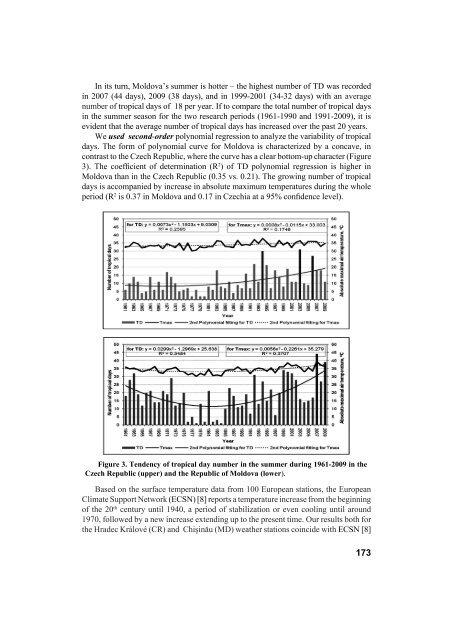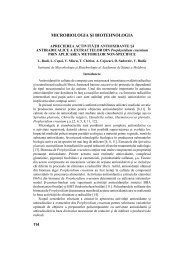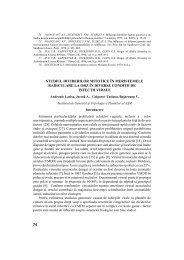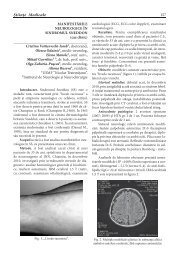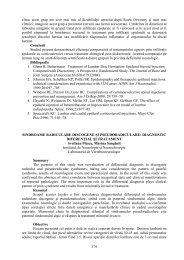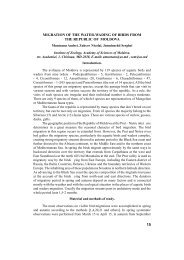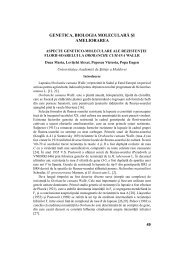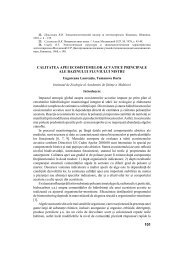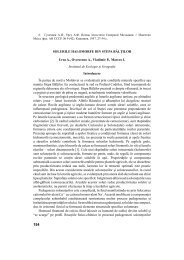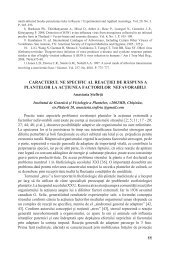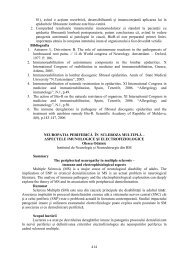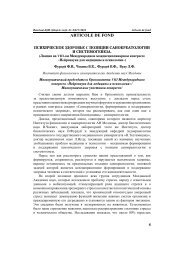209 CUPRINS
209 CUPRINS
209 CUPRINS
Create successful ePaper yourself
Turn your PDF publications into a flip-book with our unique Google optimized e-Paper software.
In its turn, Moldova’s summer is hotter – the highest number of TD was recorded<br />
in 2007 (44 days), 2009 (38 days), and in 1999-2001 (34-32 days) with an average<br />
number of tropical days of 18 per year. If to compare the total number of tropical days<br />
in the summer season for the two research periods (1961-1990 and 1991-2009), it is<br />
evident that the average number of tropical days has increased over the past 20 years.<br />
We used second-order polynomial regression to analyze the variability of tropical<br />
days. The form of polynomial curve for Moldova is characterized by a concave, in<br />
contrast to the Czech Republic, where the curve has a clear bottom-up character (Figure<br />
3). The coef cient of determination (R 2 ) of TD polynomial regression is higher in<br />
Moldova than in the Czech Republic (0.35 vs. 0.21). The growing number of tropical<br />
days is accompanied by increase in absolute maximum temperatures during the whole<br />
period (R 2 is 0.37 in Moldova and 0.17 in Czechia at a 95% con dence level).<br />
Figure 3. Tendency of tropical day number in the summer during 1961-2009 in the<br />
Czech Republic (upper) and the Republic of Moldova (lower).<br />
Based on the surface temperature data from 100 European stations, the European<br />
Climate Support Network (ECSN) [8] reports a temperature increase from the beginning<br />
of the 20 th century until 1940, a period of stabilization or even cooling until around<br />
1970, followed by a new increase extending up to the present time. Our results both for<br />
the Hradec Králové (CR) and Chişinău (MD) weather stations coincide with ECSN [8]<br />
173


